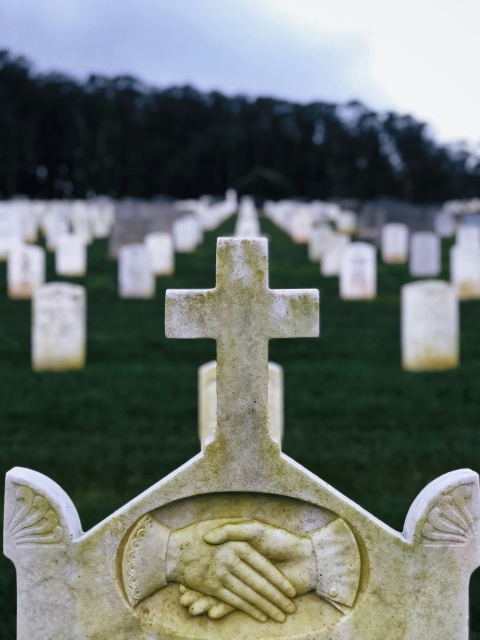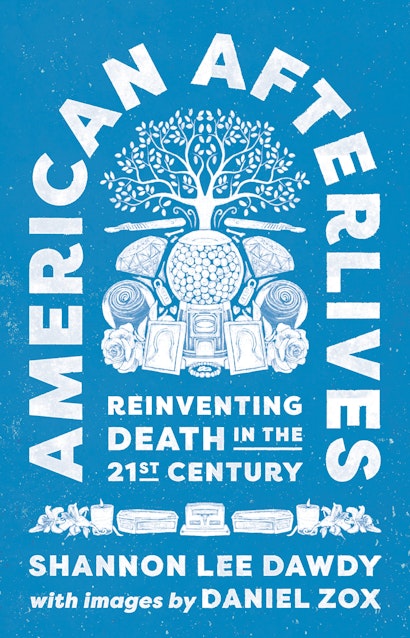I first became aware of Shannon Dawdy’s American Afterlives during the fall of 2019, when her friend and fellow New Orleanian, the literary scholar and Princeton author Bryan Wagner, suggested that she contact Princeton University Press about her manuscript. As an established and award-winning cultural anthropologist and archaeologist, as well as an experienced author, Shannon had other publishing options for her new book, to be sure. I was delighted that she contacted my colleagues and me at Princeton University Press to invite a discussion about a possible fit. By happy coincidence, I was planning a short visit to New Orleans later that fall, to attend a Middle Eastern studies conference. We were able to arrange a get-together in a café in the French Quarter to discuss her book, just months before in-person meetings became impossible for a long, long time. I enjoyed our conversation over great coffee—I highly recommend French Truck Coffee on Chartres Street in NOLA, which seems to have survived the pandemic—and Shannon patiently and engagingly addressed all of my questions. I invited her to send me a book proposal and writing sample from the manuscript, which she did some weeks later.
I was captivated by what I read. The author travelled across the United States, talking to funeral directors, cemetery owners, other death-care professionals, and ordinary people from all walks of life, asking them what they think happens when we die, what they want done with their own bodies when their time comes, and what sort of death practices and rituals they have taken part in or organized for their loved ones or on behalf of the loved ones of the recently deceased. What Shannon uncovered was a veritable quiet revolution in death practices in the U.S. Her proposal promised a book that examines this unfolding revolution of DIY home funerals, green burials, and the many personal, surprising, and creative things mourners are doing with the ashes of their cremated dead.
As an anthropologist and archaeologist, Shannon was trained in fields to which the question of how a society treats its dead has historically been central. A book on this topic, by someone with Shannon’s professional profile, made sense and was intuitively appealing. What made her book even more attractive, however, was its potential to reach an interested audience beyond the author’s scholarly discipline. The author’s writing persuaded me that such an audience was within reach. Shannon’s stories, as told in the draft chapters I first read through, were rendered with sensitivity and care.
As an editor, I bring an array of books that address different audiences to Princeton every year. My publishing program includes ambitious and innovative monographs aimed at the author’s discipline and at scholars and students in cognate fields; reference books and texts for upper-level undergraduates and graduate students; and general interest books that convey insights about our world and make bold yet well-supported claims in accessible, engaging language. This latter category of book, the so-called trade book, is a key part of PUP’s mission as a nonprofit scholarly publishing house that aims to bring the insights of cutting-edge scholarship into important public conversations. Early in my exchanges with the author, it became clear to me that American Afterlives would be a superb addition to our list of trade books, complementing other recent PUP anthropology titles aimed at non-specialists, such as Caitlin Zaloom’s Indebted: How Families Make College Work at Any Cost, Matthew Engelke’s How to Think Like an Anthropologist, and T.M. Luhrmann’s How God Becomes Real.
Moreover, as PUP’s editor for books in religion and religious history (including American religious history) as well as anthropology, it’s always a special pleasure to acquire books that create synergy across my publishing programs. It occurred to me that Shannon’s book would likely find a readership among scholars in religious studies and religious history, including those who were avid readers of another recent Princeton book, Thomas Laqueur’s The Work of the Dead, an acclaimed 2016 cultural history of care for the dead from antiquity to modern times.
It wasn’t hard to persuade my colleagues—including fellow editors, members of the sales, marketing, and publicity teams, and the Press management committee—that Shannon’s book would be a great fit for us. But before extending an offer to Shannon, I needed to make sure that she and PUP would be on the same page, not just on how the book would be promoted, but also in terms of its look and feel.
Although Shannon is the sole author of American Afterlives, the book draws upon a collaboration with photographer and filmmaker Daniel Zox. She and Daniel completed a documentary film entitled I Like Dirt. on the topic of the book, based on Shannon’s research in California. We all agreed that the book should feature a selection of black-and-white stills of Daniel’s photography and videography. But we also wanted to ensure the book’s affordability in the book retail market. This meant keeping production costs under control, and avoiding the high costs associated with heavier, coated paper stock—the sort of paper one associates with art books and art exhibition catalogs. It also meant avoiding color images in the interior pages. Shannon, after consulting with Daniel, agreed provided that she and Daniel be consulted on the book’s interior design and that Daniel be given due credit on the book’s front cover and on the title page.
Having come to a meeting of minds on the crucial matters of audience and production specs, my colleagues and I at PUP were then in a position to develop a projected budget for the book, and, on that basis, prepare a contract offer—which, happily, she accepted.
Shannon’s book manuscript successfully underwent peer review in mid-2020, and her completed book was released into the world during pandemic times, in the fall of 2021, in a jacketed hardback (cloth) edition, as well as in an e-book and an audio edition through our Princeton Audio imprint, narrated by voice actor Kelly Burke. A paperback edition of American Afterlives was released in December of 2023. Our hope and expectation is that the paperback edition will find its way into the classroom and into the hands of non-specialist readers interested in this perennial topic.
I’ve been asked by the editor of The Immanent Frame to comment, in this short piece, on one or more significant changes in scholarly book publishing over the last decade, and on what further changes I anticipate in the years ahead. As I listed the multiple editions of Shannon’s book that PUP has launched into the world, it occurred to me that this expansion of book formats has been among the most consequential recent changes in the book publishing landscape. What began with the introduction of e-books several decades ago—it became possible to read books on laptops, tablets, phones, and other devices—expanded six years ago with our launch of Princeton Audio, the first university press audiobook program. Over time, we’ve all developed a more capacious and flexible understanding of what a book is. We’ve come to accept that listening is as legitimate, and can be as profound, a way of engaging with a book as reading on the page or screen.
In the midst of this change, however, core features of scholarly book publishing remain constant. It’s still all about the author and their ability to make generative contributions to public conversations in ways that draw upon the very best and most up-to-date scholarship from their field. The task for their chosen book publisher is still to help them take their original, promising ideas and turn them into the sort of book that captures the attention of readers and makes a mark. Easy to say, but hard to do! Book publishing has always been a deeply collaborative enterprise. These collaborations are increasingly global. (This past year, for example, PUP and the Spanish-language publisher Editorial Planeta announced a new partnership that will support the simultaneous publication of select general interest books in English with PUP and in Spanish with Planeta.) Although it’s impossible to know what the future will hold, I’m confident that the collaborative nature of this shared enterprise will never change, so long as there are authors, publishers, and readers.
This essay was originally published on The Immanent Frame.
Fred Appel is publisher at Princeton University Press and acquires books in the fields of religious studies, broadly conceived—including books in Islamic studies, Jewish studies, and American religion and its history—and in cultural anthropology. He has worked with many authors over a two-decade long career in scholarly book publishing, including Anna Lowenhaupt Tsing, T.M. Luhrmann, Noah Feldman, Shahab Ahmed, Adriana Petryna, Philip Gorski, Kecia Ali, Shaul Magid, Paula Fredriksen, and Caitlin Zaloom.

